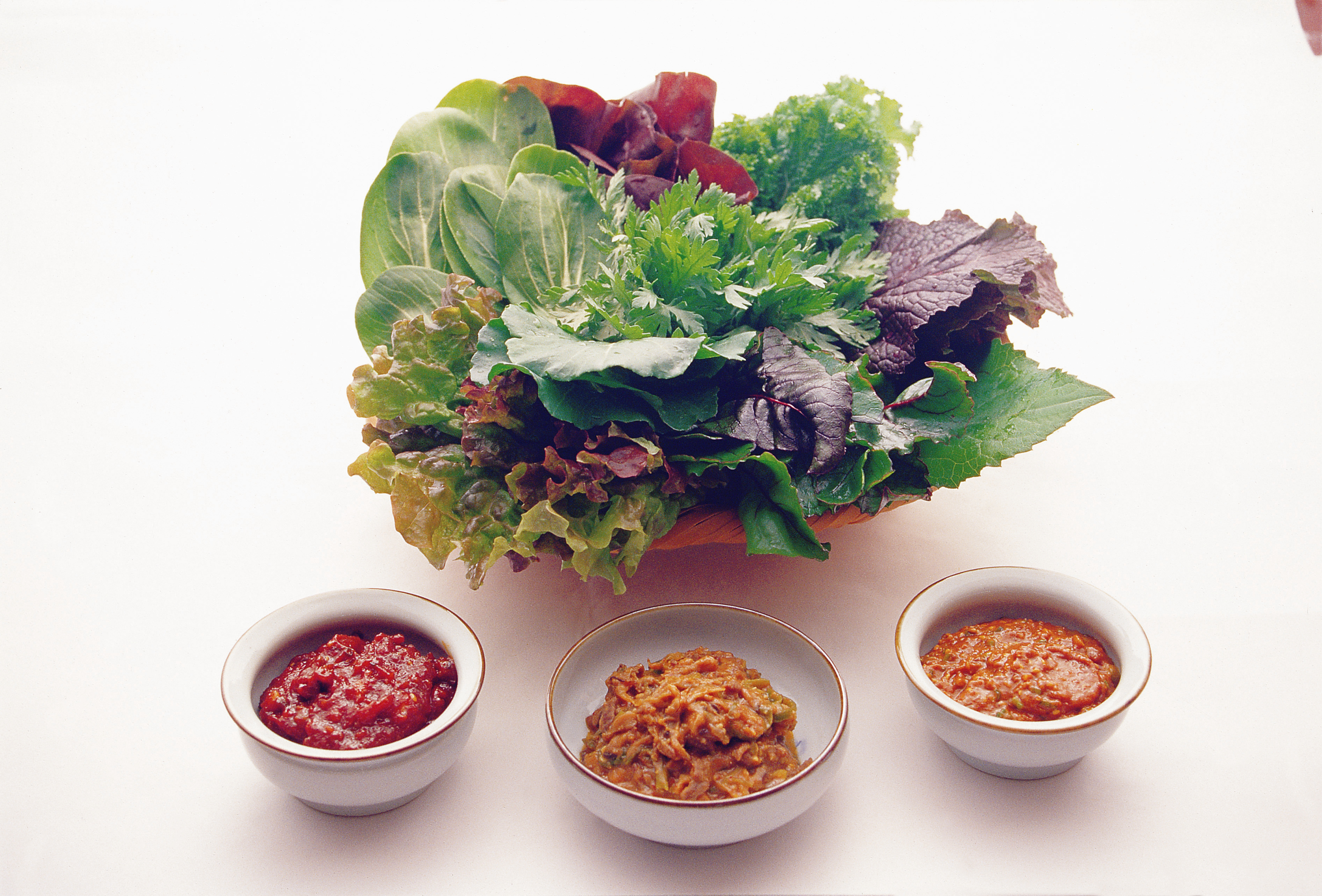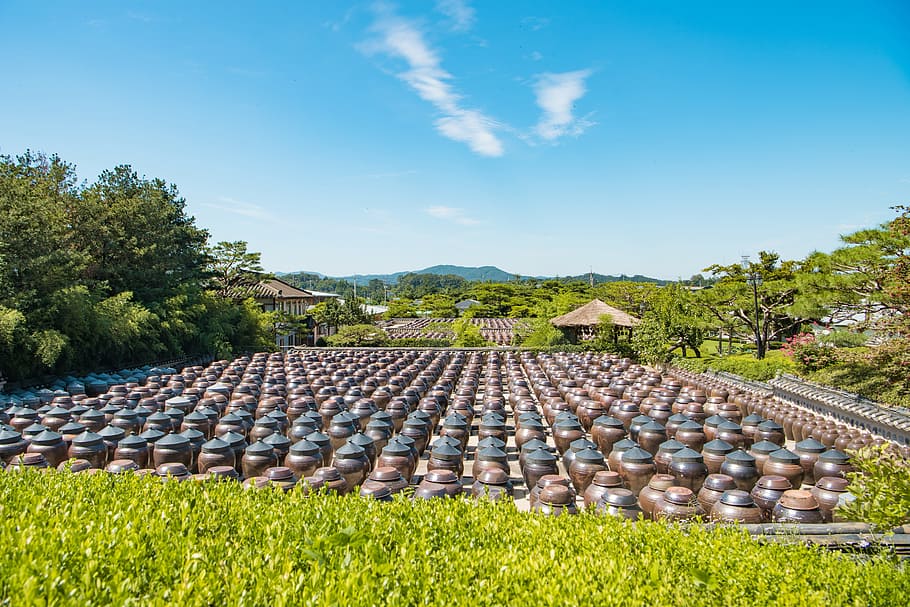Secret Korean Sauces
Subscribe to Mill Blog to read interesting articles, helpful reviews, recommendations and more!
“Food is only as good as the Jang”
Korean Proverb
Korean Sauces are Jang!

Korean sauces and pastes, or Jang, are the base of the wide range of delicious and intense flavors in Korean cuisine. Their rich depth and complexity can be bold or subtle in a dish, showing versatility in cooking, marinating and seasoning. Jang is also rich in nutrition thanks to its high-quality ingredients and natural fermentation process.
An old Korean proverb perfectly characterizes the weight Jang carries in Korean cuisine, “food is only as good as the Jang”.
Korean Jang has been developed over many years of tradition and history. Some of the most popular and iconic Jang include:
Gochujang: A spicy, savory, and sometimes even sweet Korean red pepper paste with a rich gloss and thick viscosity. It’s deep, rich taste is ideal for Korean vegetables, vegetable banchan, bibimbap, tteokbokki stir-fried rice, grilled foods, and much more!
Doenjang: A deep, rich, and savory sauce packed with umami-flavor. The thick brown paste boasts a distinctive salty, sweet, and earthy flavor. Perfect for adding depth of flavor and richness to Korean soups, stews, sauces, and much more!
Ssamjang: This Korean dipping sauce gained worldwide popularity due to the explosion of KBBQ! It’s the perfect blend of doenjang and the bold flavors of Korean chili pepper, garlic, onion, chives, and sesame oil. It’s the best sauce to pair with hot KBBQ grilled meat!
The range of flavors of these amazing sauces spans from spicy and sweet to nutty and savory. Each sauce brings a unique depth of flavor and nutrition thanks to traditional Korean fermentation techniques.
The History of Jang

Koreans have truly mastered fermentation techniques over centuries of practice and use. It was a safe, practical, and innovative way to preserve food ingredients naturally without relying on synthetic preservatives. Over time it became an essential part of Korean culture and cuisine with multiple health benefits.
Korean fermented soybeans are the base of many Jangs and are mentioned as far back as the third century. According to Weekly Korea, Jang is mentioned in the Chinese historical text “The Records of the Three Kingdoms” observed that the “Goguryeo people are good at brewing fermented soybeans”. Another historical text from the Three Kingdoms era, Samguk Sagi, states that doenjang and ganjang ( soy sauce) were served at King Sinmun’s wedding in February 683.
Korean Joseon texts describe in great detail the methods and techniques in brewing doenjang and ganjang. Each step of the brewing process is addressed, from the best time to brew to how to store and preserve different Jang.
The Process

Korean Jang is made by bringing fresh, natural ingredients and intensifying depth and complexity of flavor through fermentation. Fermentation is essentially the process of enzymes breaking down ingredients to more concentrated forms. Natural ingredients that are properly fermented help bolster the immune system and promote anti-aging!
Deonjang for example is made with fermented soybeans and brine. The doenjang fermentation process also yields intensely-flavored soy sauce used for soups and broths.
According to a study published in the NCBI, due to its fermentation process doenjang contains “a high level of bioactive compounds such as isoflavones and saponins...doenjang is a good source of essential amino acids, minerals, vitamins, and phenolic compounds.” Soybeans are also high in lysine, an essential amino acid. The study asserts that “doenjang has ACE inhibitory effects that can help prevent increased blood pressure”.
The fermentation process begins before the onset freeze of winter in early November. Soybeans are soaked overnight, boiled in saltwater, and pounded into a paste or ground using a millstone. The pounded soybean is compressed into a brick known as meju. The meju bricks are then stored in a cool area away from sunlight to firm up.
Once the meju bricks are hardened, they are traditionally tied with rice straws and hung out the sides of the roof or stored in warm Korean Ondol rooms for fermentation. By the first month of the lunar calendar, the bricks will be well-fermented enough to be washed and then sun-dried.

Photo by Mar Del Este, per Wiki Commons
Once they are dried, the meju bricks are sealed and aged in specialized traditional onngi (Korean pottery) with brine. Charcoal and Korean chilies are added for their absorbent and antibacterial properties. Finally, after reaching the proper fermentation, the aged meju can be mashed for doenjang while the remaining liquid is boiled into soy sauce (ganjang).
Meju (dried fermented soybean) is the secret ingredient behind the rich flavor and nutrition of Korean Jang! It turns native Korean ingredients into the iconic sauces that help define Korean cuisine. Just how doenjang’s deep, rich, and nutty flavor is built by quality meju, Korean red pepper paste (gochujang) also relies on quality meju blended with red chili powder, rice powder, salt, and other additional ingredients.
There are many different kinds of Jangs you can choose when making Korean dishes. From sweet honey gochujang to the specialized makjang, you can find all kinds of Jangs right here at SeoulMills!

Add a comment